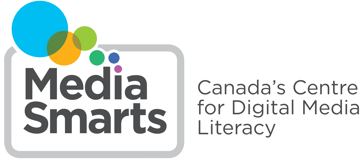Ontario - Computer Studies 10 ICD2O
Strand A: Computational Thinking and Making Connections
Overall Expectations:
Throughout this course, in connection with the learning in strands B to D, students will:
A1. Computational Thinking, Planning, and Purpose
apply computational thinking concepts and practices, and use various tools and processes to plan and develop computational artifacts for a wide variety of contexts, users, and purposes
Specific Expectations:
A1.2 use a variety of tools and processes to plan, design, and share algorithms and computational artifacts
MediaSmarts Resources
A1. Digital Technology and Society
demonstrate an understanding of important social, cultural, economic, environmental, and ethical issues, as well as contributions and innovations involving diverse local and global communities, related to digital technology
Specific Expectations:
A2.1: investigate current social, cultural, economic, environmental, and ethical issues related to digital technology that have personal, local, and global impacts, taking various perspectives into account
MediaSmarts Resources
- Alcohol on the Web
- Authentication Beyond the Classroom
- Body Image and Social Media: Escaping the Comparison Trap
- Break the Fake: Hoax? Scholarly Research? Personal Opinion? You Decide!
- Challenging Hate Online
- Challenging Hate Online
- Deconstructing Web Pages
- Digital Skills for Democracy: Assessing online information to make civic choices
- First, Do No Harm: Being an Active Witness to Cyberbullying
- Free Speech and the Internet
- Hate 2.0
- Hate or Debate
- Introduction to Online Civic Engagement
- My Voice is Louder Than Hate: Pushing Back Against Hate
- My Voice is Louder Than Hate: The Impact of Hate
- Online Gambling and Youth
- Online Propaganda and the Proliferation of Hate
- Online Relationships: Respect and Consent
- Privacy Rights of Children and Teens
- PushBack: Engaging in Online Activism
- Reality Check: We Are All Broadcasters
- Remixing Media
- Scapegoating and Othering
- Technology Facilitated Violence: Criminal Case Law
- The Invisible Machine: Big Data and You
- The Pornography Debate
- There's No Excuse: Confronting Moral Disengagement in Sexting
A2.2: analyze personal and societal safety and cybersecurity issues related to digital technology, and identify measures and technologies that can help mitigate related concerns for individuals and communities
MediaSmarts Resources
- Cyberbullying and the Law
- Hate 2.0
- My Voice is Louder Than Hate: Pushing Back Against Hate
- Scapegoating and Othering
- Secure Comics
- There's No Excuse: Confronting Moral Disengagement in Sexting
- Thinking about Hate
A2.4: investigate how to identify and address bias involving digital technology
MediaSmarts Resources
Strand B: Hardware, Software, and Innovations
Overall Expectations:
Throughout this course, in connection with the learning in strands B to D, students will:
B3. Cybersecurity and Data
demonstrate an understanding of safe and effective practices related to data and cybersecurity in various contexts
Specific Expectations:
B3.1: apply safe and effective data practices when using digital technology in various contexts
MediaSmarts Resources
B3.2: apply safe and effective security practices, including practices to protect their privacy, when using digital technology in various contexts
MediaSmarts Resources
- The Invisible Machine: Big Data and You
- The Privacy Dilemma: Lesson Plan for Senior Classrooms
- Your Online Resume
B3. Innovations in Digital Technology
investigate current and emerging innovations in digital technology, including automation and artificial intelligence, and assess their benefits and limitations
Specific Expectations:
B4.1: investigate current innovations, including automation and artificial intelligence systems, and assess the impacts of these technologies on everyday life
MediaSmarts Resources
B4.2: investigate hardware and methods used to establish networks and connectivity, and assess the benefits and limitations of increased connectivity with reference to everyday life
MediaSmarts Resources
- Digital Media Experiences are Shaped by the Tools We Use: The Disconnection Challenge
- The Privacy Dilemma: Lesson Plan for Senior Classrooms
- Your Online Resume
B4.3: investigate emerging innovations related to hardware and software and their possible benefits and limitations with reference to everyday life in the future
MediaSmarts Resources
Strand B: Programming
Overall Expectations:
Throughout this course, in connection with the learning in strands B to D, students will:
C1. Programming Concepts and Algorithms
demonstrate an understanding of the functions and features of the hardware and software they encounter in their everyday life
Specific Expectations:
C1.1 use appropriate terminology to describe programming concepts and algorithms
MediaSmarts Resources
C1.2 describe simple algorithms that are encountered in everyday situations
